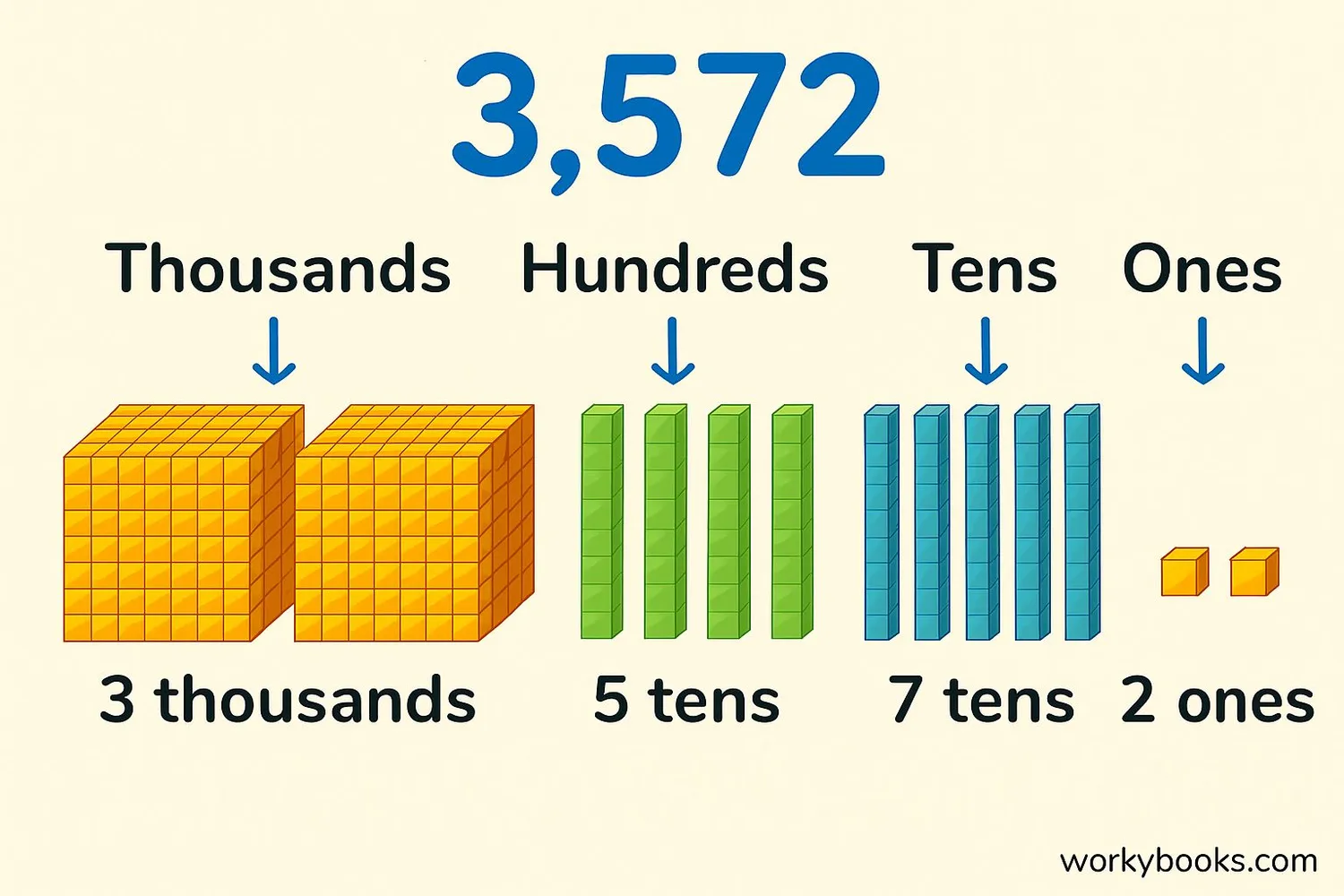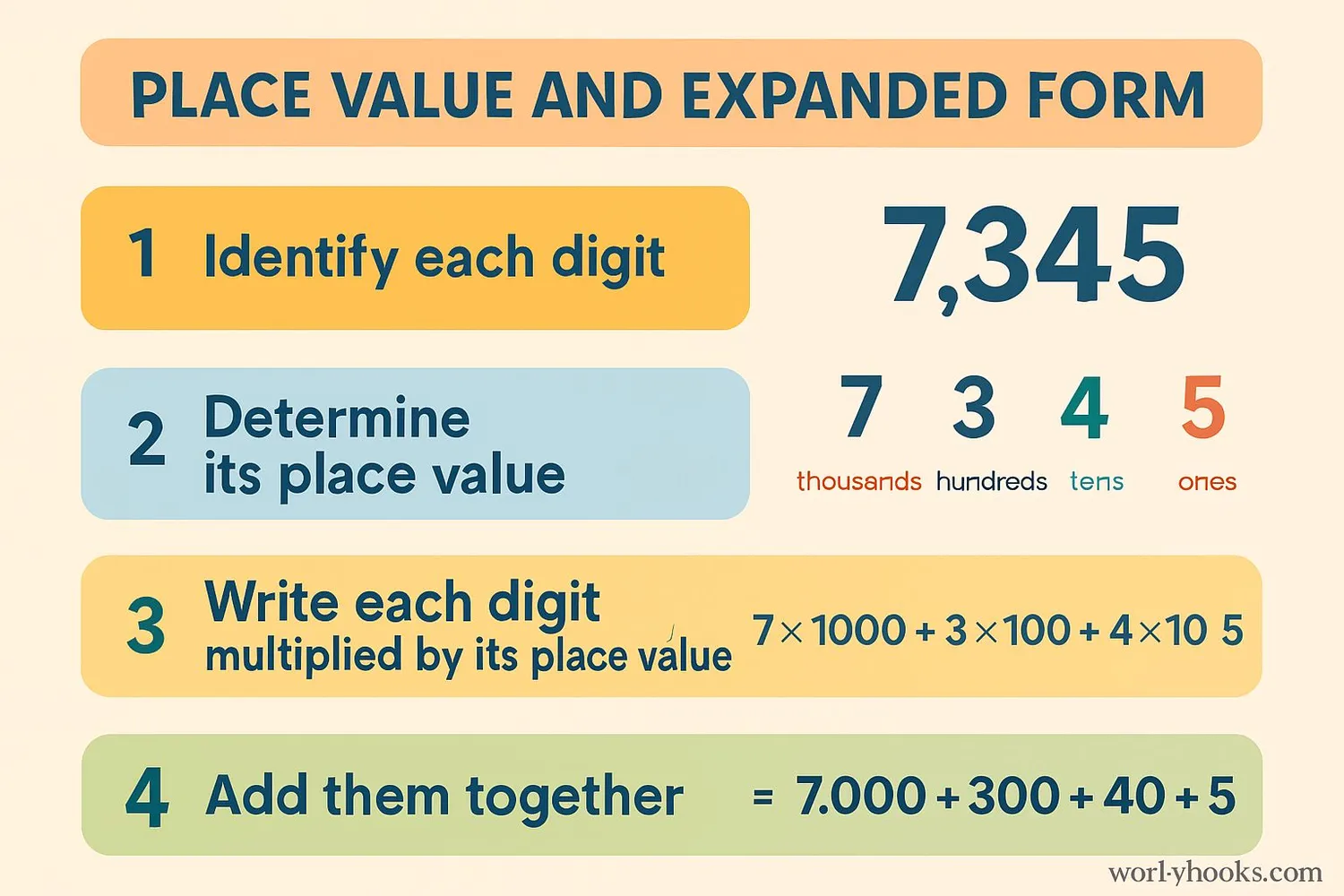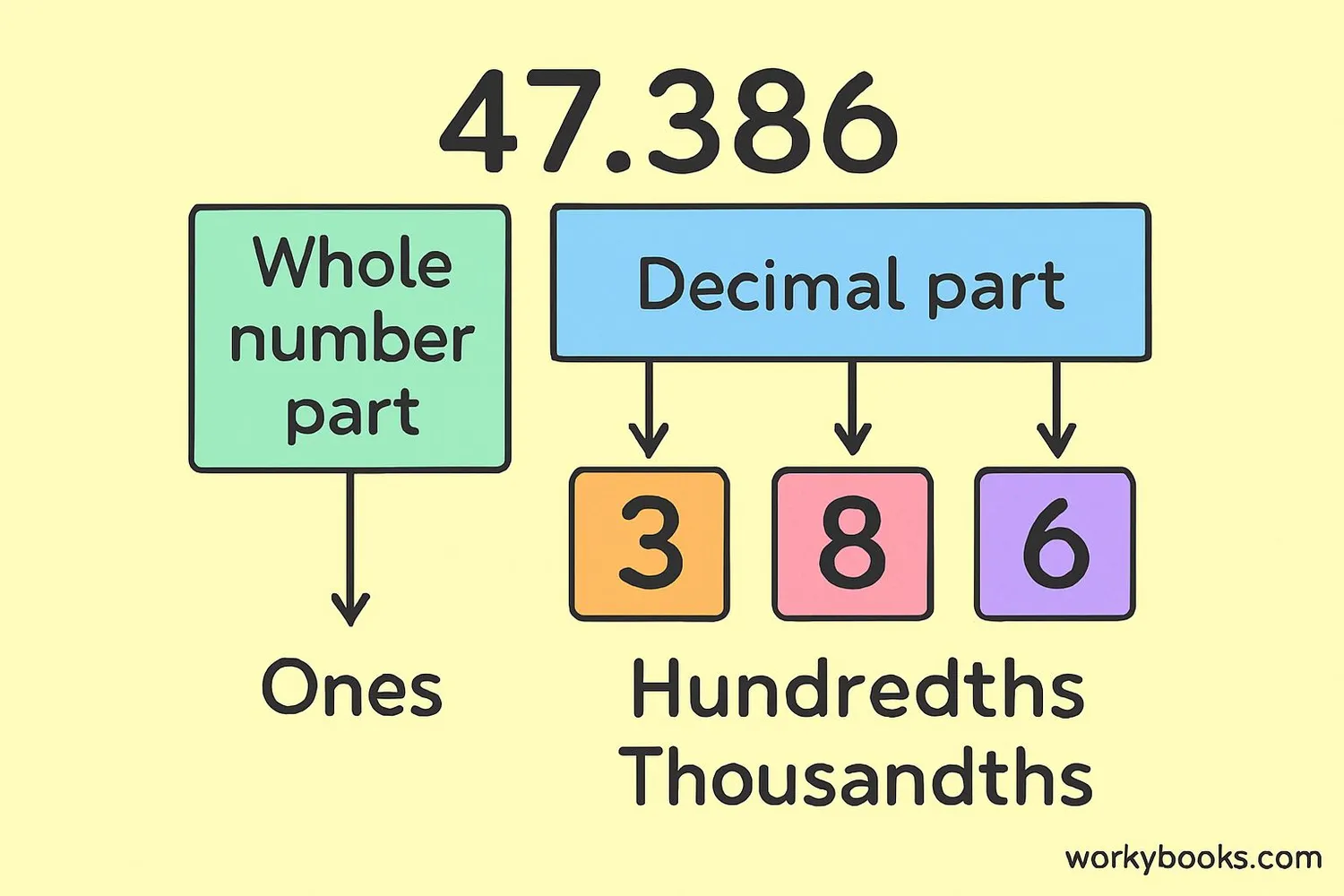Expanded Form - Definition, Examples, Quiz, FAQ, Trivia
Learn to write numbers by showing the value of each digit with visual examples and practice activities
What is Expanded Form?

Expanded form is a way to write numbers by showing the value of each digit. Instead of writing a number like 357, we write it as 300 + 50 + 7. This helps us understand how much each digit is worth based on its place in the number.
Think of expanded form like taking a number apart to see what it's made of. For example, the number 4,621 in expanded form is:
4,000 + 600 + 20 + 1
Why is expanded form useful? It helps us:
- Understand place value better
- Compare numbers more easily
- Perform addition and subtraction
- Build a strong foundation for more advanced math
Write 729 in expanded form
Solution: 700 + 20 + 9
Key Concept
Expanded form shows the value of each digit separately. Each digit is multiplied by its place value.
How to Write Numbers in Expanded Form

Writing numbers in expanded form is easy when you follow these steps:
Step 1: Identify each digit in the number
Step 2: Determine each digit's place value
Step 3: Multiply each digit by its place value
Step 4: Write the results as a sum
Let's practice with an example:
Example: Write 8,536 in expanded form
Step 1: Digits are 8 (thousands), 5 (hundreds), 3 (tens), 6 (ones)
Step 2: Place values: 8 × 1000, 5 × 100, 3 × 10, 6 × 1
Step 3: 8,000 + 500 + 30 + 6
So 8,536 = 8,000 + 500 + 30 + 6
Remember
If there's a zero in a place value, you can skip it in expanded form or include it as 0 × place value.
Decimals in Expanded Form

Expanded form works with decimal numbers too! For decimals, we include the fractional parts after the decimal point.
Decimal place values:
- Ones (1)
- Tenths (0.1)
- Hundredths (0.01)
- Thousandths (0.001)
To write a decimal in expanded form:
Example: Write 45.82 in expanded form
Step 1: Identify each digit: 4 (tens), 5 (ones), 8 (tenths), 2 (hundredths)
Step 2: Multiply by place values: 4 × 10 = 40, 5 × 1 = 5, 8 × 0.1 = 0.8, 2 × 0.01 = 0.02
Step 3: Write as a sum: 40 + 5 + 0.8 + 0.02
So 45.82 = 40 + 5 + 0.8 + 0.02
Write 3.075 in expanded form
Solution: 3 + 0.07 + 0.005
Decimal Tip
For decimals, the place values get smaller as you move right from the decimal point - tenths, hundredths, thousandths, etc.
Expanded Form Practice Quiz
Test your understanding with this 5-question quiz. Choose the correct answer for each question.
Frequently Asked Questions
Here are answers to common questions about expanded form:
Number Trivia
Discover interesting facts about numbers and place value:
Place Value Origins
The place value system we use today originated in ancient India around 500 CE. This revolutionary concept allowed us to write numbers efficiently using just ten digits (0-9).
The Largest Named Number
The largest named number is a googolplex, which is 10 raised to the power of a googol (10100). Writing this number in standard form would require more space than exists in the observable universe!
The Importance of Zero
The number zero was developed later than other digits. Ancient civilizations like the Romans didn't have a symbol for zero. The concept of zero as a placeholder was a mathematical breakthrough.
Decimal Point History
The decimal point was first used by Christopher Clavius in 1593. Before that, mathematicians used various symbols like a vertical bar or a comma to separate whole numbers from fractions.





